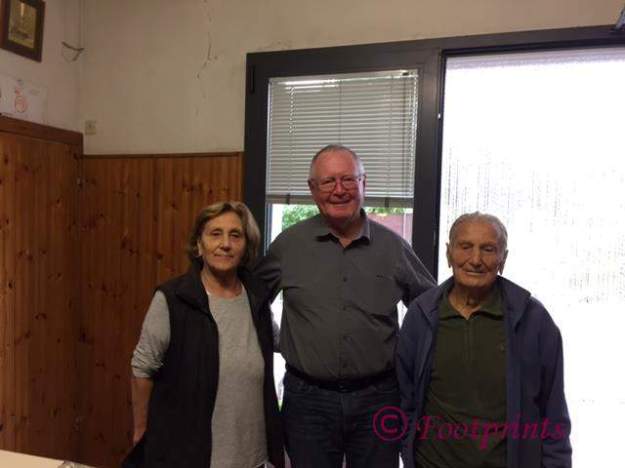At the beginning of this project, I had a wish list. It was a simple list: to find one Queenslander who remembered the Italian prisoners of war and to double the number of photos of Italian prisoners of war in Queensland. The only three photos in the public domain which feature our Queensland POWs are housed in the John Oxley Library.
My wish list for one story and three photos has been exceeded many times over.
BUT I had never expected to find the testimonies of Italians about their time as prisoners of war. This project is honoured to have these testimonies as part of its collection.
Antonino Lumia’s story is told in more depth in A Voice from the Past, Fighting in North Africa and Capture.Surrender.Imprisonment . His grandson Damiano Lumia recorded his grandfather’s memories over 40 years ago ensuring that the voice of the Italian soldier can be heard and that his experiences are not forgotten.

HAY, NSW. 1944-01-16. ITALIAN PRISONERS OF WAR HAVING A MEAL IN THEIR MESS AT NO. 7 COMPOUND, 16TH GARRISON BATTALION PRISONER OF WAR DETENTION CAMP. PICTURED ARE: 46007 ANTONIO LUMIA (1); 45824 BRUNO GALLIZZI (2); 46734 ALMO STAGNARO (3); 48355 GIUSEPPE ARRIGONI; (4); 45087 ANTONIO BACCIGALUPO (5); 46620 MICHELE RIZZO (6); 46626 EMILIO RUOCCO (7); 46635 FRANCO RONDELLI (8); 45900 ALESSANDRO IANNOTTA (9).
(AWM, Image 063371 McInnes, Geoffrey)
Costanzo Melino’sstory is part of a book written and published by his daughter Rosa Melino “Anzaro: The Home of My Ancestors”. Captured… On the Move and Captured at Bardia share the everyday details of life as a young Italian soldier. Costanzo returned to Australia after the war with his family following later. Life as a soldier was difficult but life as a ‘new’ Australian presented many challenges for the Melino family.

Costanzo Melino c 1940
(photo courtesy of Rosa Melino)
Ferdinando Pancisi is 100 years old and living and working in a tiny village Civorio in Alta Romagna. Tim Dwyer (ex Boonah) arranged for Tammy Morris and Nicola Cianti to visit Ferdinando (Ferdy) in October 2017. His memories were recorded on 21st October 2017. They offer a stoic perspective on life, war, death and imprisonment. Ferdy had worked on the farm of Pat Dwyer Fassifern via Boonah and for over 70 years the Dwyer family have corresponded with Ferdy. At first it was Pat Dwyer, then his wife Joie and recently son Tim. This is a special family connection and legacy. Against all odds, Tim arranged for Ferdy to be interviewed so that his ‘voice’ will never be silenced.

Anna Pancisi, Tim Dwyer and Ferdinando Pancisi
(photo courtesy of Cathy Dwyer)
Angelo Valianteis a well known and much respected resident of the Stanthorpe district. His story is recorded in a book, newspapers and a mural painting. Seizing an opportunity and an offer to have an interview filmed, I travelled with Ann Megalla to Stanthorpe in October 2017 to talk with Angelo about his time as a prisoner of war.












































